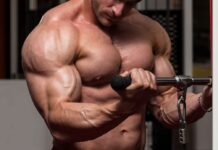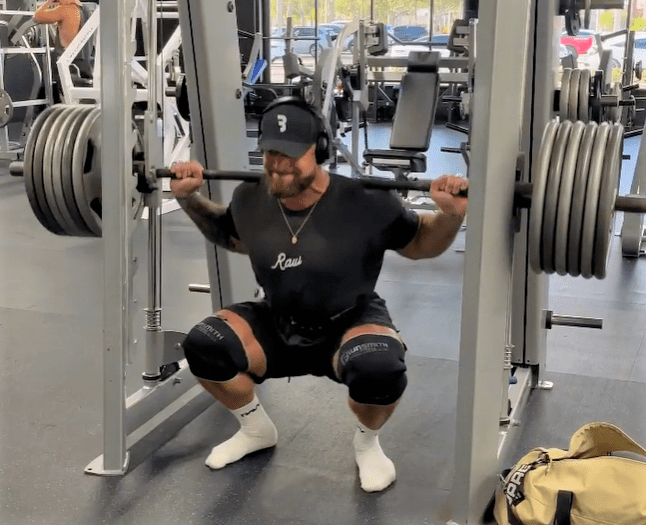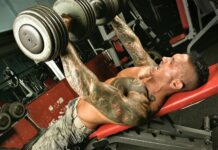You wouldn’t ride an elevator that had no fixed path. You want to be locked into the same route on ever trip. So it is with Smith machine exercises. And there are many more such exercises than most weight-trainers realize. In fact, there are enough that you can work every bodypart on a Smith machine, making certain every rep goes straight up and down. We explain the fundamentals of the Smith machine, from its name to its design to its advantages and disadvantages, and we show you how to best use a Smith machine to train your entire body.
SMITH MACHINE NAME
It rightly should be called the LaLanne machine. In order to safely squat without a spotter, fitness pioneer Jack LaLanne came up with the idea in the 1950s for a bar attached on both sides to a sliding apparatus, and he rigged one up in his commercial gym. His friend Rudy Smith improved the design, enlisted an equipment builder, and sold the machines widely to gyms. As manufacturers copied the concept, the popularity of what were known as Smith machines grew.
SMITH MACHINE DESIGN
With most Smith machines, the bar travels perfectly vertical. With others, the bar moves vertical but also slightly backwards at a seven-degree angle. And with a 3-D Smith machine—some of which are called Jones machines, playing off the Smith name—you move the bar vertically but you can also slide the entire support mechanism (and therefore the bar, as well) horizontally, whether subtly backwards as you lockout shoulder presses or dramatically forwards as you stride on lunges. Because 3-D Smith machines are still gym rarities, we will refer only to regular Smith machines from hereon.
All Smith machines have several safety bars or catches to set the starting height at various levels and to safely rerack the bar at a lower height if a rep fails. For safety and to alter the range-of-motion, most Smith machines also incorporate an adjustable stop and/or a dead stop at the bottom to limit how low the bar can go.
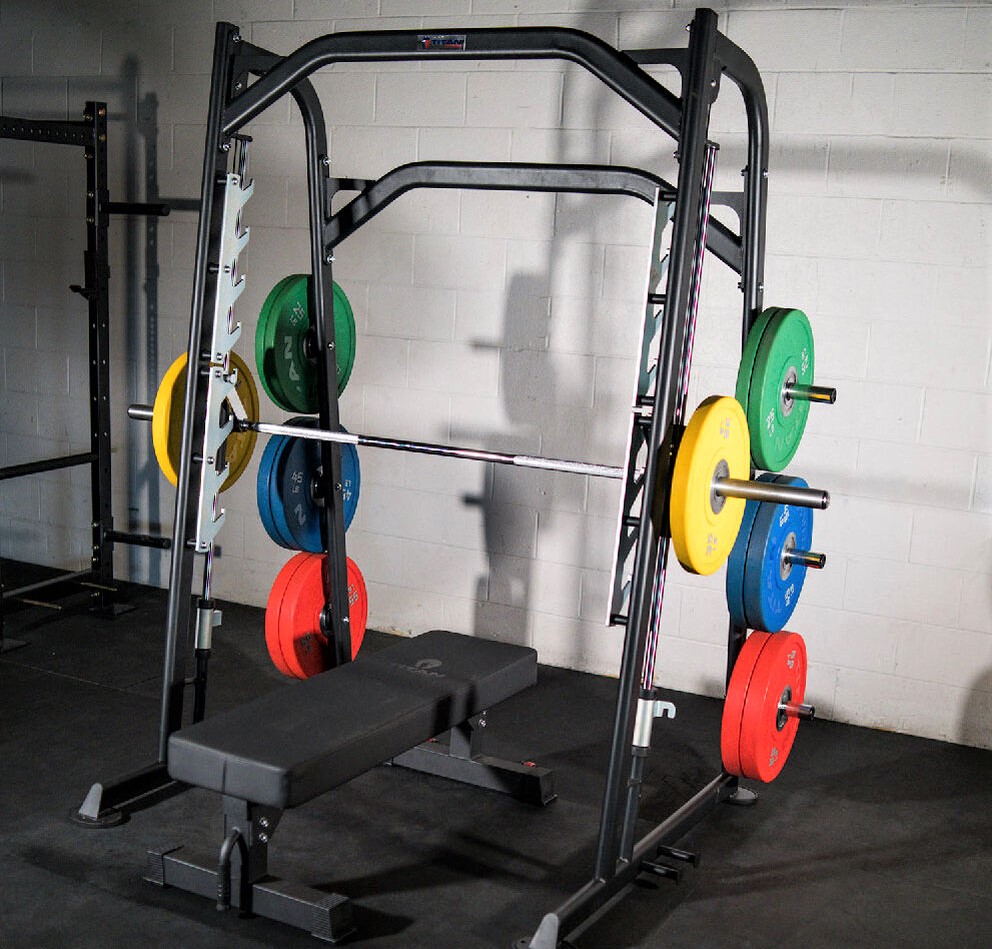
HOW MUCH DOES A SMITH MACHINE BAR WEIGH?
It’s wrong to assume a Smith machine bar weighs 20 kg. (44 lbs.) just because it resembles a seven-foot Olympic barbell. It likely weights much less. There is no universal weight for a Smith machine bar, and the number depends more on its support system than its material construction. However, most Smith machine bars weigh between 15 lbs. and 25 lbs., so 20 lbs. (9 kg.) is a good estimate.
SMITH MACHINE BASICS
Although their multiple safety catches are great for bench pressing or squatting alone, Smith machines can be used for any lift that travels through a vertical plane. Having the bar stay perfectly parallel to the floor and the range of motion locked in place are both strengths (allowing you to focus only on propelling the resistance) and weaknesses (failing to activate muscles for balancing). A Smith machine removes horizontal movement from arced exercises, like curls, effectively transforming those exercises into very different ones (curls become drag curls). Also, a Smith machine provides a height-adjustable bar for bodyweight lifts.
SMITH MACHINE ADVANTAGES
✷ The bar’s path is locked into a vertical or slightly angled route so you fight gravity from start to finish.
✷ The bar is always parallel to the floor, so it remains balanced with your left and right sides.
✷ The many safety catches allow you to go to failure without a spotter.
✷ By removing any horizontal movement, many common exercises are altered to become unique exercises.
✷ As the following roll call of exercises proves, you can effectively train every bodypart with only a Smith machine, utilizing exercises or exercise variations that are seldom done.
SMITH MACHINE DISADVANTAGES
✷ The inability to find the best path for your body as you’re locked into a vertical movement and the bar is perfectly horizontal may unduly stress your joints.
✷ Stabilizer muscles are not stimulated as they are with free weights.
✷ Focus too much on Smith machine exercises instead of their free-weight counterparts and you may harm your strength in the free-weight exercise. For example, do only Smith machine shoulder presses for an extended period and you’ll likely find your strength in dumbbell shoulder presses—in which you need to balance two dumbbells and press them independently—slow, stall, or decrease.
SMITH MACHINE LEG EXERCISES
Smith machine squats can be safely performed with a variety of stances, from feet far out in front (working the glutes and hamstrings more, contrary to what many believe) to under your hips (working mostly the quadriceps) and from very wide (more inner quads) to heels together (more outer quads). You can also do front squats, Romanian split squats, lunges, step-ups, and vertical leg presses. For hamstrings, do stiff-leg deadlifts while standing on a block or bench.

SMITH MACHINE GLUTE EXERCISES
Glutes can be worked via a Smith machine with the aforementioned lunges, as well as hip thrusts and donkey kicks.
SMITH MACHINE CALF EXERCISES
Both standing calf raises (toes on a block) and seated calf raises (bar resting on your legs just beyond your knees) can be done on a Smith machine.
SMITH MACHINE BACK EXERCISES
Barbell rows and deadlifts can be done Smith-style, though, dependent on the machine, you may need to stand on a box or bench to get a full range of motion. You can also do inverted rows, rack chins, and chins by setting the bar at various heights and using your body (and additional weight, if needed) for resistance.
SMITH MACHINE CHEST EXERCISES
You can bench press the Smith machine bar while lying flat or at an incline or decline. For beginners or for a high-rep pump-out at the end of your chest routine, the bar can also be set at various heights for pushups. These are even easier than regular pushups (and still easier the higher the bar is set). Note also that such elevated pushups approximate a decline press (upside-down) and therefore work lower pecs much more than upper pecs.

SMITH MACHINE BICEPS EXERCISES
By pulling your elbows back as you raise the bar straight up against your body, the Smith machine smooths out any hitch in a drag curl. It’s equally effective for underhand inverted rows (feet on the floor) and pullups (feet off the floor), both of which target the biceps along with the lats.
SMITH MACHINE FOREARM EXERCISES
A reverse drag curl on the Smith machine will work the brachioradialis of your lower arms along with the biceps and brachialis of your upper arms.
SMITH MACHINE TRICEPS EXERCISES
You can do triceps extensions—overhead or lying—by moving your elbows forward as you lift the bar straight up. Another unique exercise is the bodyweight triceps extension, performed by holding the stationary bar with bent arms overhead, body-straight, toes on the floor, and then propelling yourself up and away from the bar by straightening your arms. (The lower the bar the harder it is as you move more of your bodyweight up.) Three more options: close-grip bench presses, close-grip pushups, and bench dips. In the latter grip the bar (instead of a bench) with your arms behind your back and resting your feet on a block or bench in front of you.
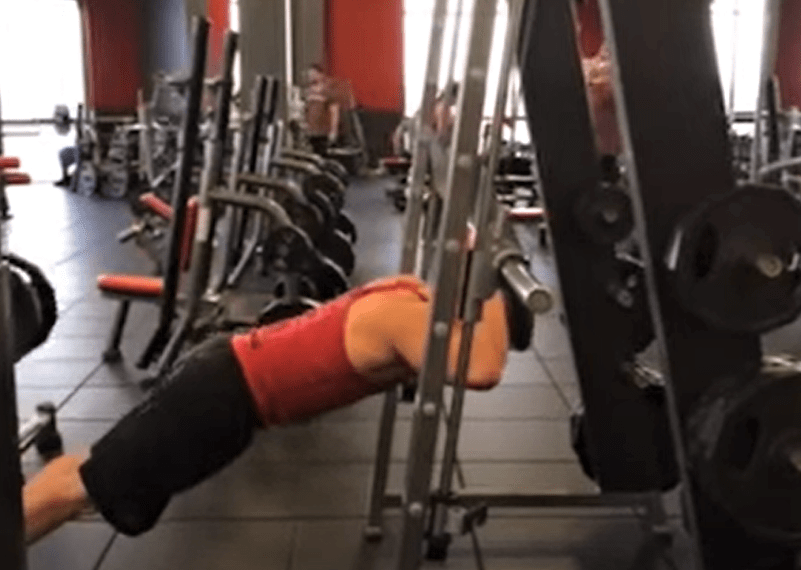
SMITH MACHINE TRICEPS ROUTINE
Overhead Triceps Extension — 3 x 10-12 reps
Close-grip Bench Press — 3 x 8-10 reps
Hands-behind-the-back Dip — 3 x 8-10 reps
Bodyweight Triceps Extension — 3 x 10-15 reps
SMITH MACHINE SHOULDER EXERCISES
Because you can safely rack and rerack the bar and bail to a safety catch if you fail, the Smith machine is great for shoulder presses. For your medial, anterior, and posterior delts, respectively, we also have three unique exercises: one-arm side laterals (with your arm bent and the bar resting on your outer arm just above your elbow), front raise isometric holds (with arms parallel to the floor), and wide-grip rows.
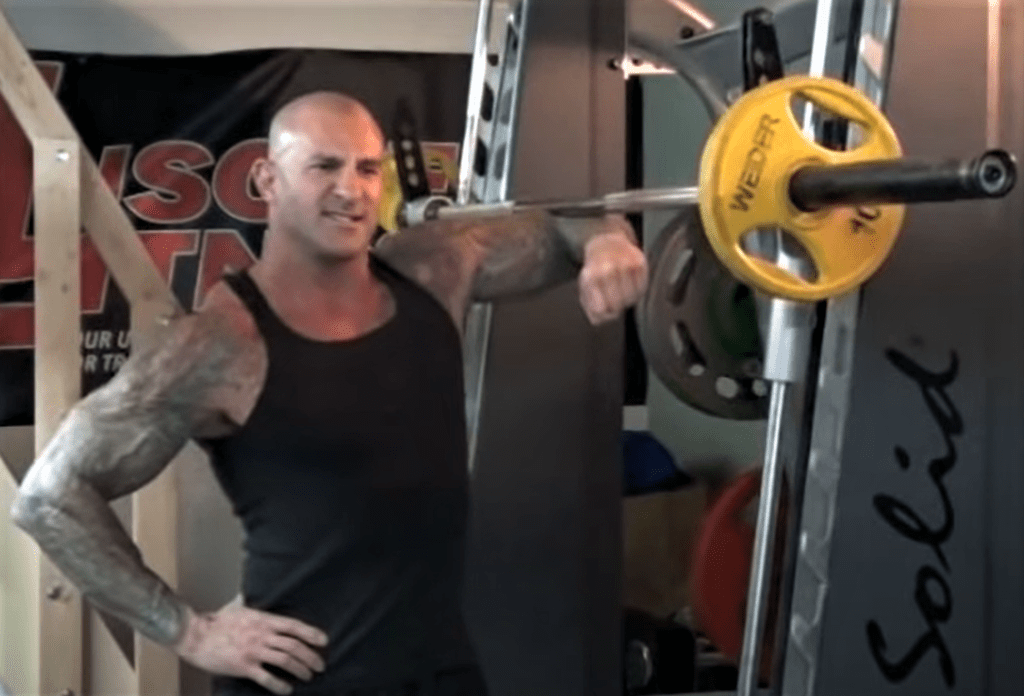
SMITH MACHINE TRAPEZIUS EXERCISES
With their vertical ranges-of-motion, shrugs—front, behind-the-back, and one-arm—as well as upright rows and high pulls are great Smith machine exercises.
SMITH MACHINE ABDOMINAL EXERCISES
Even abs can be worked on a Smith machine. For weighted crunches (upper abs) hold the bar as if doing a bench press and crunch up. Set the bar high and hold on for hanging leg raises (lower abs). And stand perpendicular to the bar and grip it with one hand for side bends (obliques).
SMITH MACHINE WORKOUT TIPS
✷ Ladders, wherein the bar is raised or lowered one or two levels after each subset, let you do drop sets on bodyweight exercises. For example, do inverted rows for 10 reps with the bar set low, raise it two levels and do 10 more reps, then raise it two more levels for a final 10 reps. The subsets grow easier as the bar moves up because your body becomes more vertical and therefore easier to pull up.
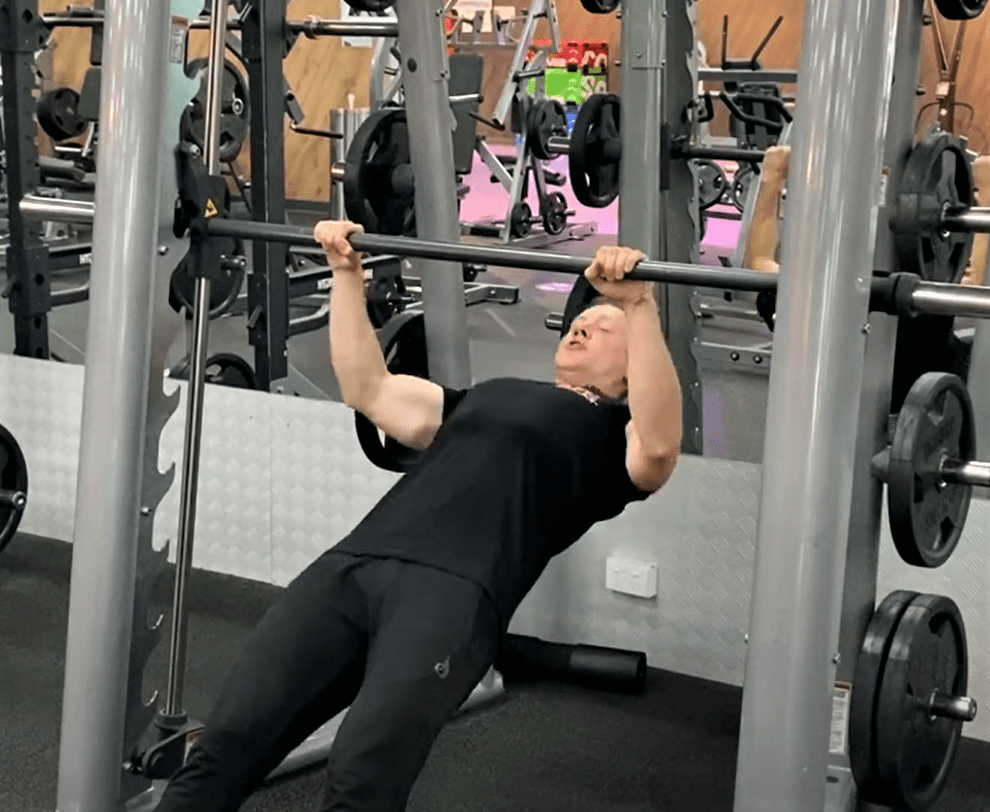
✷ A Smith machine is a convenient way to superset with the same weight, for example, pairing shoulder presses with upright rows.
✷ With some normally arced exercises, such as curls, you’ll need to bend your wrists back slightly as the weight is raised for a smooth movement and to prevent wrist strain.














